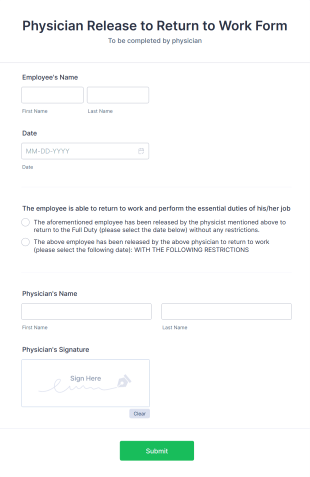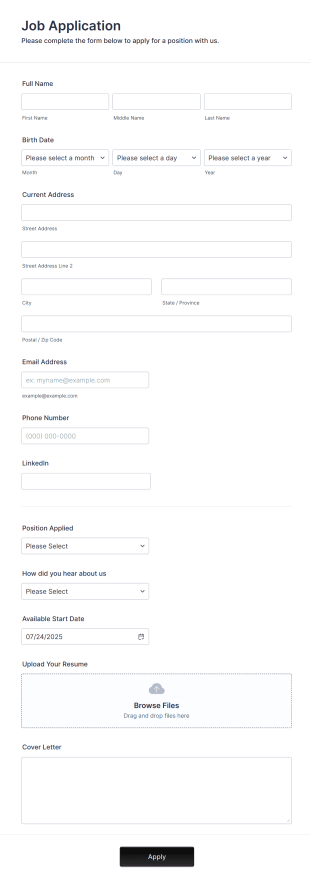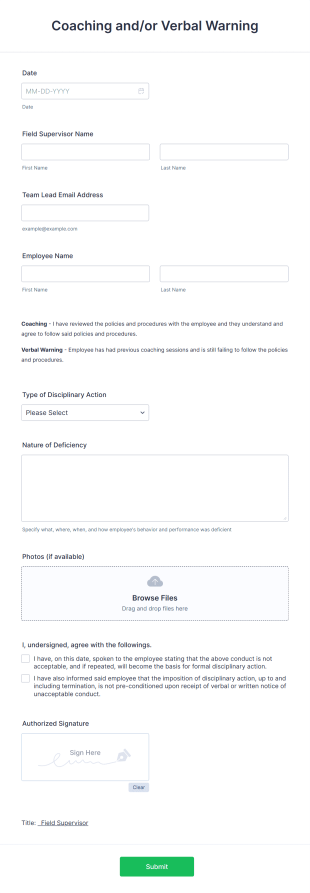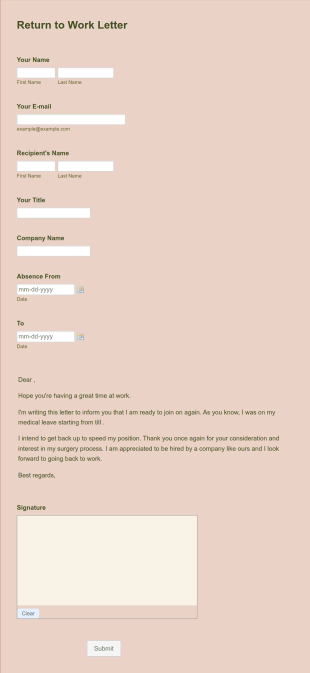New Hire 30-day Check-in Form FAQs
1) What is the purpose of the new hire 30-day check-in form?
The purpose of a new hire 30-day check-in is to set aside time to check in with new employees about how they’re progressing in the onboarding process. These meetings can be completed in person or through forms, though the most effective method is usually a combination of both.
Generally, the first 30 days an employee spends in a new position are focused on learning the ropes of the company’s processes, so the 30-day check-in is not solely aimed at employee performance. New hire 30-day check-ins let you gauge how an employee is feeling about their new position, team, and company.
2) How often is the new hire 30-day check-in form completed?
The frequency of the new hire 30-day check-in form is right in the name! These check-ins are completed around one month after a new employee has been hired. If HR departments feel that the new employee requires additional check-ins after the initial meeting, they may decide to schedule future meetings at similar intervals.
3) Who is responsible for filling out the new hire 30-day check-in form?
Typically, the HR department is responsible for filling out the new hire 30-day check-in form in tandem with the new employee. This can be done together or separately. If a manager is included in this check-in process, then they may fill out the form as well.
4) What information is typically included in the new hire 30-day check-in form?
Typically, a new hire 30-day check-in form includes identifying information about the new employee, such as name, employee ID number, and team, along with details about their position and job duties. It also measures progress through the onboarding process by asking questions about completion of training modules, personalized employee needs, how the employee is adjusting to company culture, etc.
Many new hire 30-day check-in forms utilize rating scales to measure these areas. They also draw out any goals employees set for the initial 30 days of employment. There is usually an open section for additional comments to give the employee a chance to list any challenges or concerns they may have as well.
5) Is the new hire 30-day check-in form a mandatory requirement for all new employees?
This is entirely dependent on an organization’s policies. Some companies may choose to make the new hire 30-day check-in form mandatory to standardize the onboarding process, while others may only use it to collect feedback on newly created positions.
6) How does the new hire 30-day check-in form benefit both the employee and the company?
The new hire 30-day check is beneficial for both parties involved.
Benefits for the company:
- Onboarding evaluation: The form gives your company the opportunity to analyze the effectiveness of your onboarding process, including training, assignments, etc.
- Performance assessment: Your company can assess the new hire’s performance early on in their role to make sure they’re on track to meet your expectations.
- Goal alignment: You can establish goals with your new employee to ensure they have clear objectives.
- Company culture: You can see how employees view your company to make sure your culture is healthy and thriving.
- Retention: By showing commitment to employee development and well-being, companies can improve their retention rates.
Benefits for the employee:
- Clarity and feedback: The employee gains a clear understanding of your company’s expectations and gets constructive feedback to help them excel.
- Support: The employee has the opportunity to provide feedback on the onboarding process, their team, and the company as a whole. This feedback can help them get personalized support during the transition.
- Trust and communication: The form establishes open communication and collaboration between employer and employee.
7) What are the key sections or categories covered in the new hire 30-day check-in form?
The key categories that are covered in a new hire 30-day check include
- Assessment of the onboarding process
- Outline of goals and expectations for the employee
- Open feedback about company culture
8) Are there any specific goals or objectives associated with the new hire 30-day check-in process?
Yes, the new hire 30-day check-in form tackles several important goals for an organization. The biggest benefit of this form is that it helps measure the effectiveness of your organization’s onboarding process by collecting valuable feedback. It also helps your organization understand how employees view roles and teams within the company.
These forms may also help you get an early sense of your new employee’s needs, so you can address any potential roadblocks. Lastly, you can learn about the employee’s goals while they’re still adjusting to the new role.
9) How does the information collected in the new hire 30-day check-in form influence the onboarding process?
The information collected in this form can help organizations refine their onboarding process to make it more efficient and effective for new employees. Faulty onboarding processes may not properly prepare employees for their new work, so it’s important to make sure everything is running smoothly. According to the feedback gathered during the 30-day check-in, an organization can also customize onboarding for specific teams and positions, ensuring that training and development efforts are tailored for success.
10) What are the question examples for the new hire 30-day check-in?
Here are a few examples of questions you may ask a new employee during their new hire 30-day check-in:
- Overall, how would you rate your experience so far?
- How effective has your training been?
- Is there anything we can do to support your success?
- What tools/resources do you require?
- Have you made your supervisor or support team aware of your needs?
- Have your concerns been resolved?
- Is there anything else you would like to discuss?



































